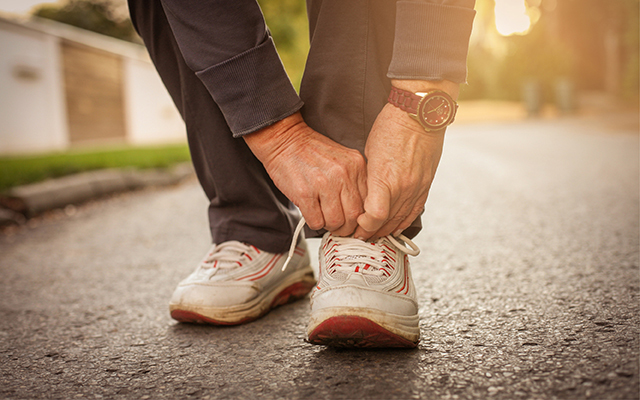Any geezer who avoids the gym as resolutely as I do should be heartened by a flurry of new research suggesting that our lassitude may not deliver us to an early grave. It might be a tad earlier than the sweat-soaked super-ager who lives in the weight room, but who’s counting? And who wants to live in the weight room?
Results of a British study released last week challenge the notion that folks my age need to work up a good lather for more than 10 minutes at a time in order to delay the Grim Reaper’s arrival. The report, published in the British Journal of Sports Medicine, acknowledges the current thinking that each of us should spend 150 minutes every week moving our bodies in some moderate-to-vigorous fashion, but it argues that the health benefits accumulate even if that movement occurs in brief spurts of more leisurely activity.
Researchers tracked nearly 1,200 participants with an average age of 78 for five years and concluded that 30 minutes of daily “light-intensity” movement yielded a 17 percent reduction in the risk of death during the monitoring period. Those who managed sweatier 30-minute workouts saw a 33 percent lower risk, but fewer than two in five of those studied were able to do it.
Easy Does It
These are just numbers, of course, and it’s no secret that a guy can be in the best shape of his life and still get hit by a bus crossing the street to get coffee, so I tend to avoid putting much stock in life-expectancy calculations. Still, it’s interesting to learn that a little gardening or a bike ride to the coffee shop (watching for buses) can have a salutary effect on a lazy geezer’s future prospects.
And this recent research simply corroborates other findings that have emerged in the past few months to reinforce my slacker workout ethic. Scientists from the University at Buffalo reported similar conclusions last November in the Journal of the American Geriatrics Society, noting the life-extending benefits of everyday chores such as folding clothes, sweeping floors, and washing windows.
“This is remarkable because current public-health guidelines require that physical activity be of at least moderate or higher intensity to confer health benefits,” noted lead study author Michael LaMonte, PhD, MPH. “Our study shows, for the first time in older women, that health is benefited even at physical-activity levels below the guideline recommendations.”
Meanwhile, a European Society of Cardiology study published in the European Journal of Preventive Cardiology revealed a 14 percent reduced risk of heart attack among elderly women who were “moderately inactive” compared with their sedentary peers.
None of this research disputes the fact that more vigorous exercise may be more effective in postponing the inevitable. In a recent study published in the journal Circulation, for example, researchers at Brigham and Women’s Hospital found a 60 to 70 percent lower risk of death among the most active women they followed over a four-year period. But they’re not talking about barbell squats and bicep curls; a brisk walk in the park on a regular basis would do the trick.
I happen to enjoy an occasional morning kettlebell session at home followed by a mile-long walk or bike ride to the office, so maybe my basic activity level puts me somewhere north of the slacker end of the geezer spectrum. Still, it’s nice to know that a little exercise goes a long way. As long as you remember to look both ways when crossing the street.



This Post Has 0 Comments